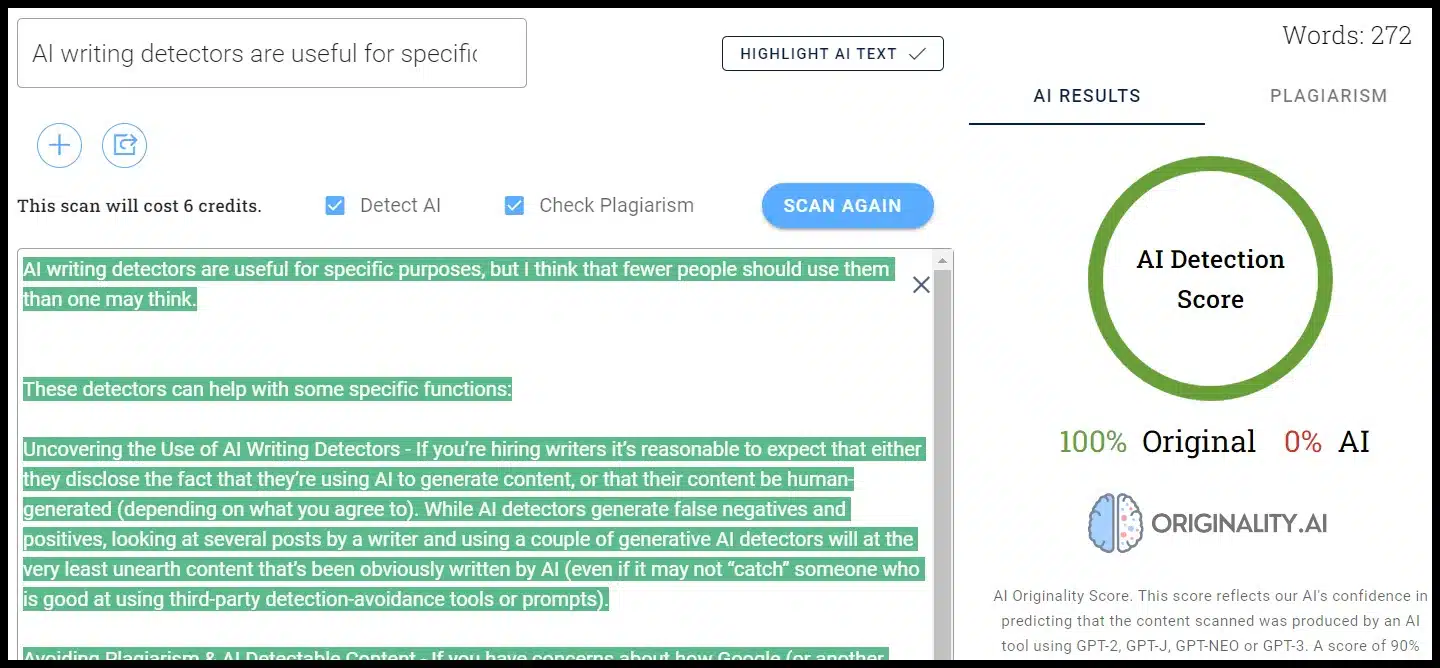Comprehending the Relevance of an Ai Detector in Today's Digital Landscape
As expert system proceeds to permeate different aspects of web content development, comparing human-generated and machine-generated product has become increasingly intricate. This advancing landscape presents considerable obstacles associated with credibility and trustworthiness, necessitating the growth of AI discovery devices. These tools not only aid in recognizing AI-produced material yet also maintain the stability of information dissemination. Comprehending their function ends up being important as we browse a future where the trustworthiness of media is under continuous examination. What implications might this have for customers and creators alike?
The Increase of AI Content

The rise of AI-generated material has significant implications for numerous sectors, including journalism, advertising, and home entertainment - ai detector. Organizations are increasingly utilizing these technologies to boost productivity, individualize material, and engage audiences more efficiently. The ability to assess substantial datasets enables AI systems to tailor web content to meet specific user preferences, providing a much more tailored experience
Nonetheless, the proliferation of AI web content also raises essential considerations for content makers and consumers alike. As AI comes to be much more integrated right into content production operations, understanding the subtleties of AI-generated product is crucial for maintaining top quality and significance in a quickly progressing electronic atmosphere. Welcoming this technological advancement while staying vigilant about its effects is important for stakeholders in the electronic media landscape.
Challenges of Credibility
The emergence of AI-generated content has presented significant obstacles relating to credibility in electronic media. As algorithms come to be a lot more sophisticated, comparing human-created and machine-generated content comes to be increasingly challenging. This obscuring of lines raises problems about the integrity of info and the potential for false information to multiply.
One of the key obstacles is the erosion of trust among consumers. With AI efficient in producing reasonable text, pictures, and videos, individuals might find it challenging to discern genuine sources from deceitful ones. This apprehension can lead to a wider mistrust of all electronic material, making complex efforts to determine reliable information.
Additionally, the implications for intellectual property are considerable. As AI devices generate material based on existing works, questions relating to ownership and originality arise. Content makers may have a hard time to protect their job from anonymous AI reproductions, threatening their livelihoods and legal rights.
Lastly, the capacity for destructive usages of AI-generated material, such as deepfakes and automated propaganda, presents significant honest and societal risks. These challenges emphasize the urgent demand for structures that support authenticity in the digital landscape, making sure that information remains trustworthy and dependable.
Duty of AI Detectors
Addressing the difficulties of authenticity in electronic media calls for innovative solutions, and AI detectors have become an important tool in this effort. These innovations are made to evaluate and identify material created by expert system, therefore assisting in the discernment between read machine-generated and human-created materials. The role of AI detectors expands past simple identification; they additionally add to maintaining the stability of information consumed by the public.
AI detectors utilize sophisticated algorithms to look at different aspects of digital material, consisting of linguistic patterns, architectural abnormalities, and details markers that suggest automation. Their application extends multiple sectors, consisting of journalism, education, and social media, where the presence of AI-generated material can lead to misinformation and erosion of count on.

Benefits of Utilizing AI Detectors
Making sure credibility in digital web content embodies the essential need for rely on details resources, and AI link detectors function as an effective ally in this quest. By identifying AI-generated web content, these tools aid maintain the honesty of details, consequently shielding users from misinformation and improving overall content high quality.
One of the main benefits of making use of AI detectors is their capability to improve material confirmation procedures, significantly decreasing the moment and initiative called for to analyze the authenticity of digital products. This performance permits content developers, instructors, and organizations to concentrate on creating reliable and high-grade info, as opposed to investing excessive sources on fact-checking.
Additionally, AI detectors foster responsibility amongst material designers. The expertise that AI-generated material can be recognized motivates transparency and ethical techniques in content production. This, in turn, adds to an extra informed electronic area, as users can confidently involve with verified information.
Future of Material Confirmation
As the landscape of electronic web content continues to develop, the future of web content confirmation challenges both provides and possibilities for maintaining authenticity. As AI modern technologies development, so as well do the techniques for distributing and creating false information (ai detector). This arms race between content creators and confirmation tools requires the growth of a lot more innovative AI detectors efficient in critical real material from click for more adjusted or fabricated product

Moreover, the increase of decentralized innovations, such as blockchain, holds assurance for confirming content provenance, guaranteeing that customers can trace the beginnings of the info they eat. Ultimately, the future of material confirmation will rest on our capability to innovate despite advancing hazards, cultivating a digital environment where authenticity is acknowledged and maintained as a fundamental principle.
Conclusion
In verdict, the spreading of AI-generated web content demands robust systems for credibility confirmation. The future of material verification hinges on the performance of AI detectors in keeping integrity across different media systems.
AI web content production tools, such as all-natural language handling designs and generative adversarial networks, make it possible for businesses and individuals to produce top notch web content at extraordinary rates and lower costs.
Nevertheless, the expansion of AI content additionally increases important factors to consider for web content developers and consumers alike. As the sophistication of AI-generated web content proceeds to develop, the role of AI detectors becomes increasingly vital in protecting credibility and promoting transparency in digital communication. The expertise that AI-generated material can be determined urges openness and moral techniques in material production.As the landscape of electronic content continues to evolve, the future of content confirmation tests both presents and chances for keeping credibility.